SereneLife SLSFE26PS Handleiding
SereneLife
Kluis
SLSFE26PS
Bekijk gratis de handleiding van SereneLife SLSFE26PS (4 pagina’s), behorend tot de categorie Kluis. Deze gids werd als nuttig beoordeeld door 16 mensen en kreeg gemiddeld 4.4 sterren uit 8.5 reviews. Heb je een vraag over SereneLife SLSFE26PS of wil je andere gebruikers van dit product iets vragen? Stel een vraag
Pagina 1/4

SLSFE26PS
PISTOL SAFE
USER MANUAL
SLSFE28PS

2
Opening Safe
The safe can be opened in two ways- using either the
included key, or by entering the correct code into the keypad.
Perform the following steps for the initial setup of your safe.At
any time,the override key can be used to open the safe door
(NEVER STORE OVERRIDE KEY IN SAFE)
To prepare safe for use:
1. Use override key to open door.
2. Install batteries
3. Enter default factory code: 1-2-3
Note: If code was entered correctly,green light will ash for
two seconds and the spring-loaded door will open swiftly.
Note: If code was entered incorrectly, red light on keypad
will ash for three seconds.
Adding/Changing Batteries
1. Place safe on its side, and locate the battery compartment
on locking assembly shown in gure 3.
2. Remove battery compartment cover, install 4*AA
batteries into battery compartment,and re-install battery
compartment cover.
3. Position safe upright. Push reset button.
NOTE: If batteries are installed properly, green light on
keypad will illuminate, followed by a red light.
4. Close safe door.
Changing Digital Lock Safe
After the successful completion of each step, the safe will beep
the indicated number of times and ash the indicated color.
To change digital lock code:
1. Open door using current code or override key.
2. Press and hold reset button (see Figure 4)
On bottom of locking assembly for three seconds. Two
beeps sound and green light ashes.
3. Enter new 3-to 8-digital code. Codes less than eight digits
long require you to push reset button to nalize the input.
Otherwise, once the eighth digit is pressed the code will
automatically be accepted. A yellow light will ash if the
code is changed successfully.
NOTE: If ve beeps sound and red light ashes, it means
the procedure was unsuccessful. Repeat Steps 2-3.
4. Re-enter a new 3- to 8- digit code.Codes less than eight
digits long require you to push reset button to nalize
input. Otherwise, once the eighth digit is pressed the code
will automatically be accepted. Green light will ash if code
is accepted.
- If ve beeps sound and red light ashes,procedure was
unsuccessful, repeat Steps 2-4.
5. Close door and test new code.
NOTICE
Keep these instructions with included combination and
override keys in a separate secure location from safe.
Misplacing override keys and forgetting the combination
will render the safe unusable.
Invalid Entry Wait Period
6. If you enter an invalid code three consecutive times, the
digital lock begins a two-minute wait period. At the end of
wait period the safe can be accessed normally.
7. While in wait period
• The digital lock will ash all three lights together if code
entry attempt is made.
• The digital keypad will not accept input.
• Removal of the battery stops the countdown but will
not reset the wait period.
• Override key can be used to access safe.
Silent Mode
This safe features a silent mode that mutes the beeps heard
when buttons are pushed on the keypad. The indicator
lights will still ash in silent mode.
To enable silent mode:
1. Push and hold button 1 on the keypad until all three
lights illuminate.
2. Enter code to test that beeps are inaudible.
To disable silent mode:
1. Push and hold button 1 on the keypad until all three light
illuminate.
2. Enter code to test that beeps are audible.
Figure 2. KeypadFigure 1. Pistol Safe Figure 3 & 4. Battery compartment located in
locking assembly

3
Maintenance
Clean the surface of the safe with a slightly damp cloth.
If the hinges develop a squeak, apply one or two drops of
light machine oil to hinge contact points.
If the digital lock’s yellow light ashed, this indicates the AA
batteries are low, please replace the batteries immediately.
Otherwise, replace once per year.
Anchoring Your Safe
Anchoring the safe to an immovable surface makes theft of
the entire safe extremely dicult.The safe can be anchored
to any surface, but wood and concrete are the most
common.
Before anchoring the safe, the shelf and foam padding
must be removed to expose the anchoring holes in the
bottom of the safe. Mark through the mounting holes
before drilling.
The following are the most common scenarios for
mounting your safe. However, since the safe can be
mounted to numerous surfaces, use discretion to
determine the best mounting method.
Anchoring to Concrete Floors
Lag shield anchors are generally recommended because
they mount ush with the oor and allow the safe to be
bolted down with a lag screw and at washer. Ensuring that
the lag shield anchors are ush with the oor aids in the
ease of movement at a later time.
Installation of lag shield anchors requires you to drill holes
into the concrete. Drilling into concrete properly requires a
hammer drill with an appropriate-sized concrete drill bit.
To ensure strong and successful anchoring to concrete:
• Drill holes in one pass and avoid raising the bit up and
down to clear the dust, which may cause the holes to
become slightly over-sized.
• Drill holes1/2”-1” deeper than the length of the lag
shield to allow room for the bottom of the screw and any
remaining dust.
• Vacuum dust from holes before installing lag shields.
Bolting to Wood Floors
Lag screws and at washers are typically used to bolt safes
to wood oors (or oors with a wood sub-oor).
Installation of lag screws works best if holes are pre-drilled
to accommodate the lag screws. A standard hand-held
power drill with the appropriate-sized wood drill bit is
required to complete the job.
To ensure strong and successful anchoring to wood:
• Pre-drill holes at the correct size for the lag screws. The
correct pre-drill size is always smaller than the lag screw
size. (For example, a 7/32” bit is used to pre-drill holes for a
3/8” lag screw)
• Use at least a 2” long lag screw.
• For additional strength, fasten at least two of the screws
into oor joists.
Figure 6. Bolting to wood oors Figure 5. Anchoring to concrete oors.
Product specificaties
| Merk: | SereneLife |
| Categorie: | Kluis |
| Model: | SLSFE26PS |
Heb je hulp nodig?
Als je hulp nodig hebt met SereneLife SLSFE26PS stel dan hieronder een vraag en andere gebruikers zullen je antwoorden
Handleiding Kluis SereneLife
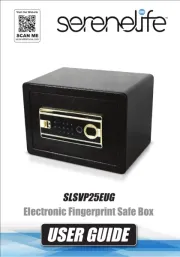
1 Oktober 2024

16 Juli 2024

6 December 2023

8 Juli 2023

6 Juli 2023

6 Juli 2023

4 Juli 2023

4 Juli 2023

2 Juli 2023

1 Juli 2023
Handleiding Kluis
- Thule
- Kogan
- Royal Safe
- Phoenix
- Hard Head
- Suncast
- Kidde
- Protector
- Duralock
- Abus
- Hama
- FireKing
- Sentry
- Westfalia
- CAWI
Nieuwste handleidingen voor Kluis
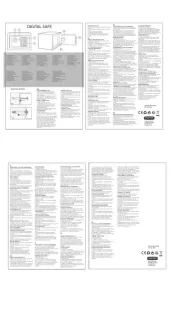
3 Augustus 2025
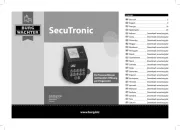
2 Augustus 2025
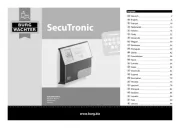
2 Augustus 2025
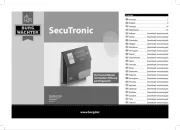
2 Augustus 2025
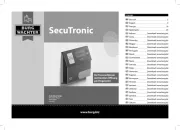
2 Augustus 2025
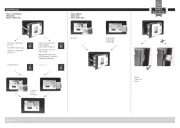
2 Augustus 2025
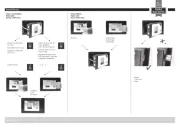
2 Augustus 2025
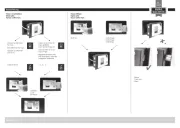
2 Augustus 2025
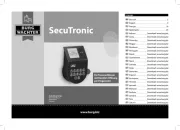
2 Augustus 2025
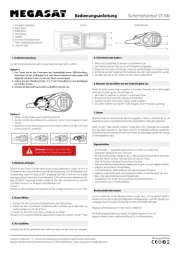
5 Juli 2025